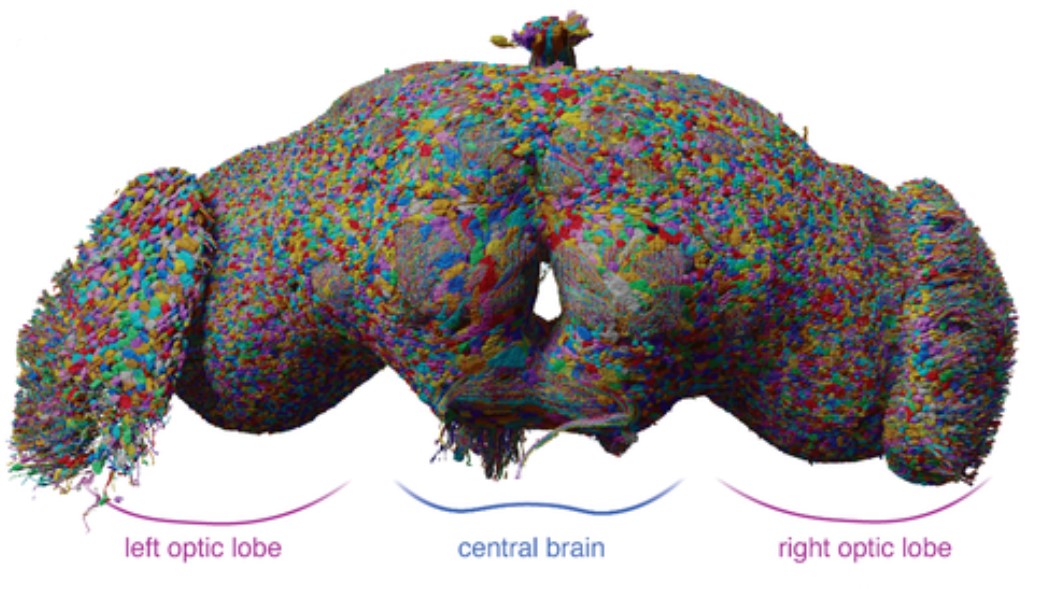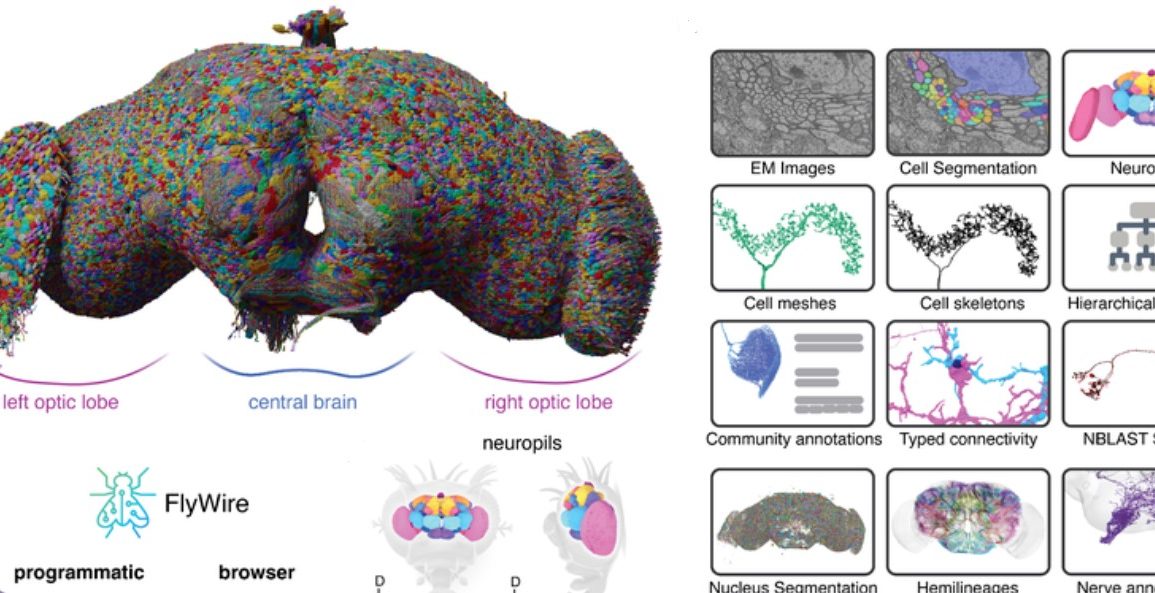In a monumental breakthrough, researchers have unveiled the first complete wiring diagram of the fruit fly brain, marking a significant step forward in the study of neuroscience.
This intricate map of the fly’s brain, comprising 139,255 neurons and 50 million synaptic connections, promises to revolutionize our understanding of how the brain drives behavior.
The team, led by scientists from Princeton University and other institutions, spent years meticulously mapping the fly brain, which is about the size of a poppy seed.
Using advanced imaging techniques, they sliced the brain into 7,000 thin sections, revealing structures as small as four millionths of a millimeter.
Artificial intelligence was employed to piece together the vast array of images, and with the help of a global team of volunteers, errors were corrected to finalize the map.

In total, over 8,400 cell types were classified, offering a detailed “parts list” for the fly brain. This groundbreaking work is already yielding results.
The map has revealed previously unknown neurons, including “interrogators” that process diverse information and “broadcasters” that help coordinate brain activity.
A neural circuit was also discovered that halts the fly’s movement when activated, offering a glimpse into how neural wiring influences behavior.
The researchers are now using the connectome, or wiring diagram, to simulate portions of the fly brain, uncovering neural circuits responsible for processes like taste.
This could open new doors to understanding how brain structure leads to behavior in all animals, including humans.
While a similar wiring diagram for the human brain is far beyond current technological capabilities due to its complexity, researchers are hopeful that mapping smaller parts of the human brain could shed light on conditions like neuropsychiatric disorders.
As Dr. John Ngai, director of the NIH Brain Initiative, stated, “We cannot fix what we do not understand,” and this research represents a pivotal moment in unlocking the mysteries of the brain.

